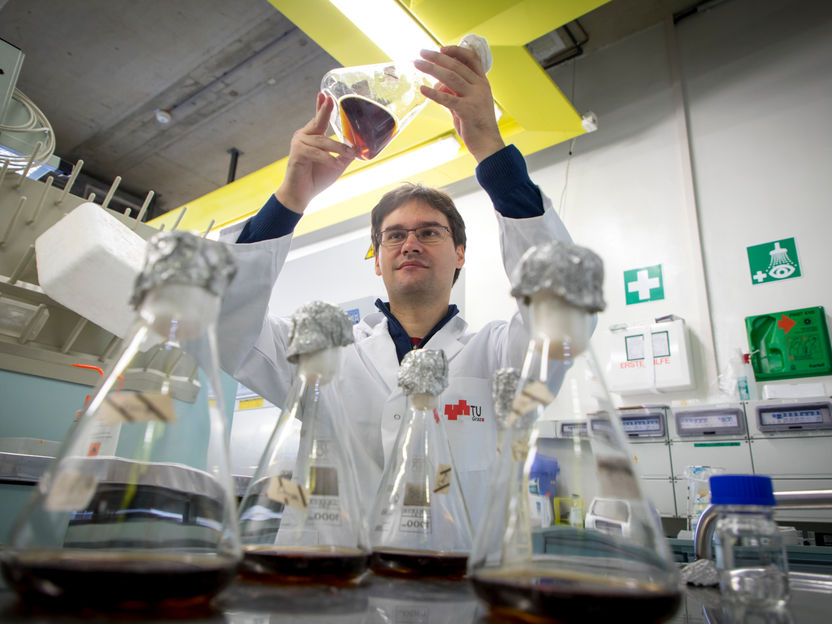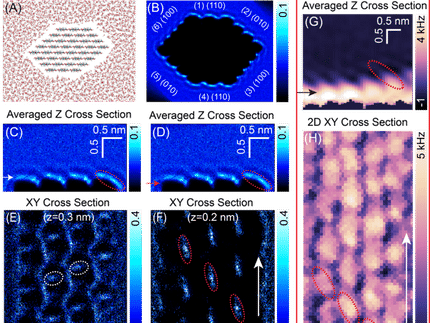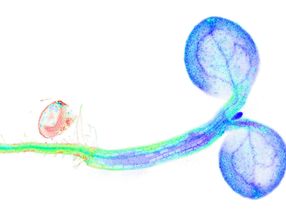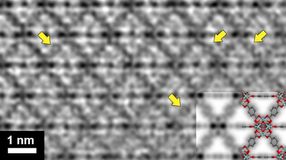Breaking down stubborn cellulose in time lapse
New perspectives for applications in industrial biorefineries
Researchers at TU Graz in Austria have for the first time ever succeeded in visualizing at the single-molecule level the processes involved in a biological nanomachine, known as the cellulosome, as it degrades crystalline cellulose. The fundamental insights thus obtained could support sustainable concepts of cellulose utilization to make a breakthrough in industrial biotechnology.

Analyses of TU Graz prove the efficient operation of the cellulose degrading biological nanomachine cellulosome. This can provide new perspectives for applications in industrial biorefineries.
© Lunghammer - TU Graz
The plant component cellulose is an extremely resistant, water-insoluble polymer that is difficult to break down. This makes the efficient and sustainable use of plant biomass in biorefineries more difficult. "Only when there are sustainable and cost-efficient approaches for the degradation of cellulose will we start to produce fuels, chemicals and materials on a large scale from plant biomass," explains Bernd Nidetzky, biotechnologist and head of the Institute of Biotechnology and Biochemical Engineering at TU Graz.
Cellulose degradation in nature
In nature, the biological breakdown of cellulose occurs either through cellulases or through cellulosomes. Cellulases are enzymes that differ in their specificity and mode of action and are synergistically involved in the degradation of cellulose from woody plants such as trees or shrubs. Although individual cellulases may be located in close proximity to each other, they are individual, physically independent units. A cellulosome, on the other hand, is a protein complex, an ordered and physically interconnected collection of enzymes necessary for cellulose degradation.
Bernd Nidetzky and his team have set themselves the task of better understanding and visualising cellulosomes as essentially cellulose-degrading biological nanomachines. The researchers have now taken a decisive step towards this goal in an Austrian Science Fund (FWF) supported project. They were able to visualize a cellulosome at the single-molecule level during cellulose degradation by means of time-lapse atomic force microscopy and thus gain insights into its mode of operation.
Nanomachines at work
In concrete terms, the researchers document the degradation of cellulose using a cellulosome from the bacterium Clostridium thermocellum. It is shown that the cellulosome dynamically adapts to the different surface conditions of the cellulose. "When binding to cellulose, the cellulosome switches to elongated, even thread-like forms and morphs them dynamically on a time scale of less than one minute according to the requirements of the attacked cellulose surface. Compared to cellulases, which detach material when sliding along crystalline cellulose surfaces, cellulosomes remain locally bound for minutes and remove the underlying material. The consequent roughening of the surface leads to efficient degradation of cellulose nanocrystals," explains Bernd Nidetzky.
Outlook for biorefineries
"Our analyses prove that cellulosomes are extremely efficient in breaking down cellulose. They could therefore play a central role in the development of new approaches for biorefineries," stressed Nidetzky. By exploiting the different mechanisms of action of enzyme complexes in the form of a cellulosome and free enzymes, cellulose degradation can be carried out faster, more completely and with less enzyme requirement. The synergies between the degradation mechanisms of cellulase and cellulosomes could thus help in the design of hybrid cellulase systems and provide new perspectives for applications in biorefineries.
Original publication
Other news from the department science

Get the analytics and lab tech industry in your inbox
By submitting this form you agree that LUMITOS AG will send you the newsletter(s) selected above by email. Your data will not be passed on to third parties. Your data will be stored and processed in accordance with our data protection regulations. LUMITOS may contact you by email for the purpose of advertising or market and opinion surveys. You can revoke your consent at any time without giving reasons to LUMITOS AG, Ernst-Augustin-Str. 2, 12489 Berlin, Germany or by e-mail at revoke@lumitos.com with effect for the future. In addition, each email contains a link to unsubscribe from the corresponding newsletter.



















![[Fe]-hydrogenase catalysis visualized using para-hydrogen-enhanced nuclear magnetic resonance spectroscopy](https://img.chemie.de/Portal/News/675fd46b9b54f_sBuG8s4sS.png?tr=w-712,h-534,cm-extract,x-0,y-16:n-xl)





































